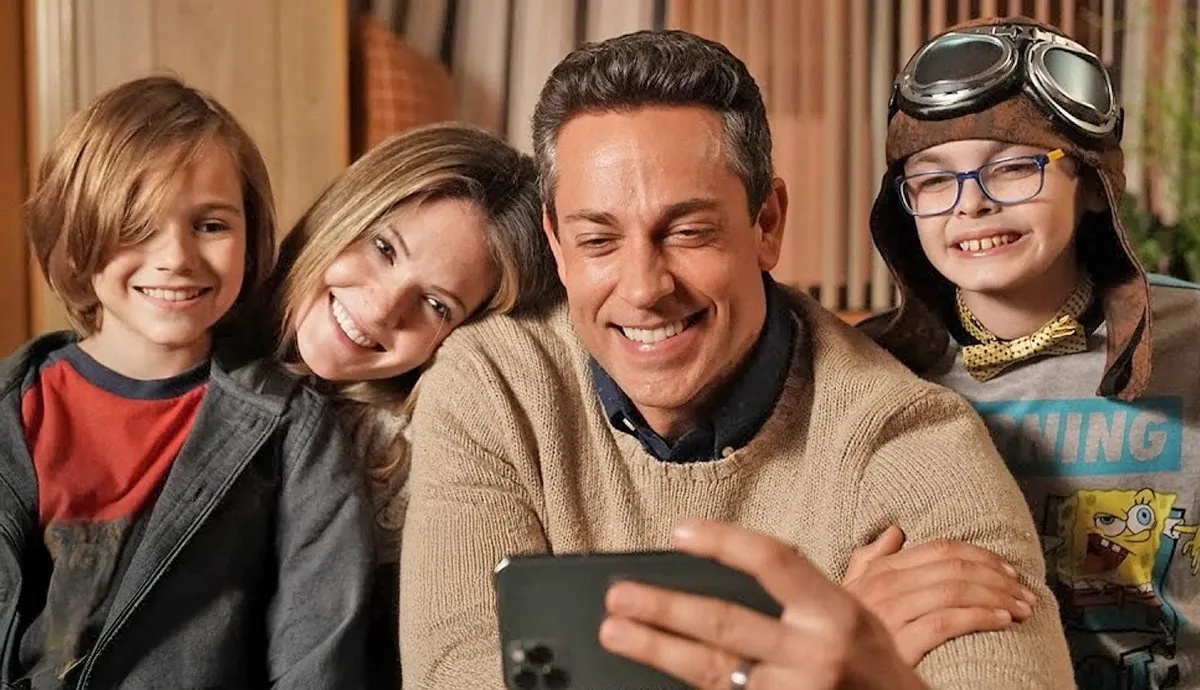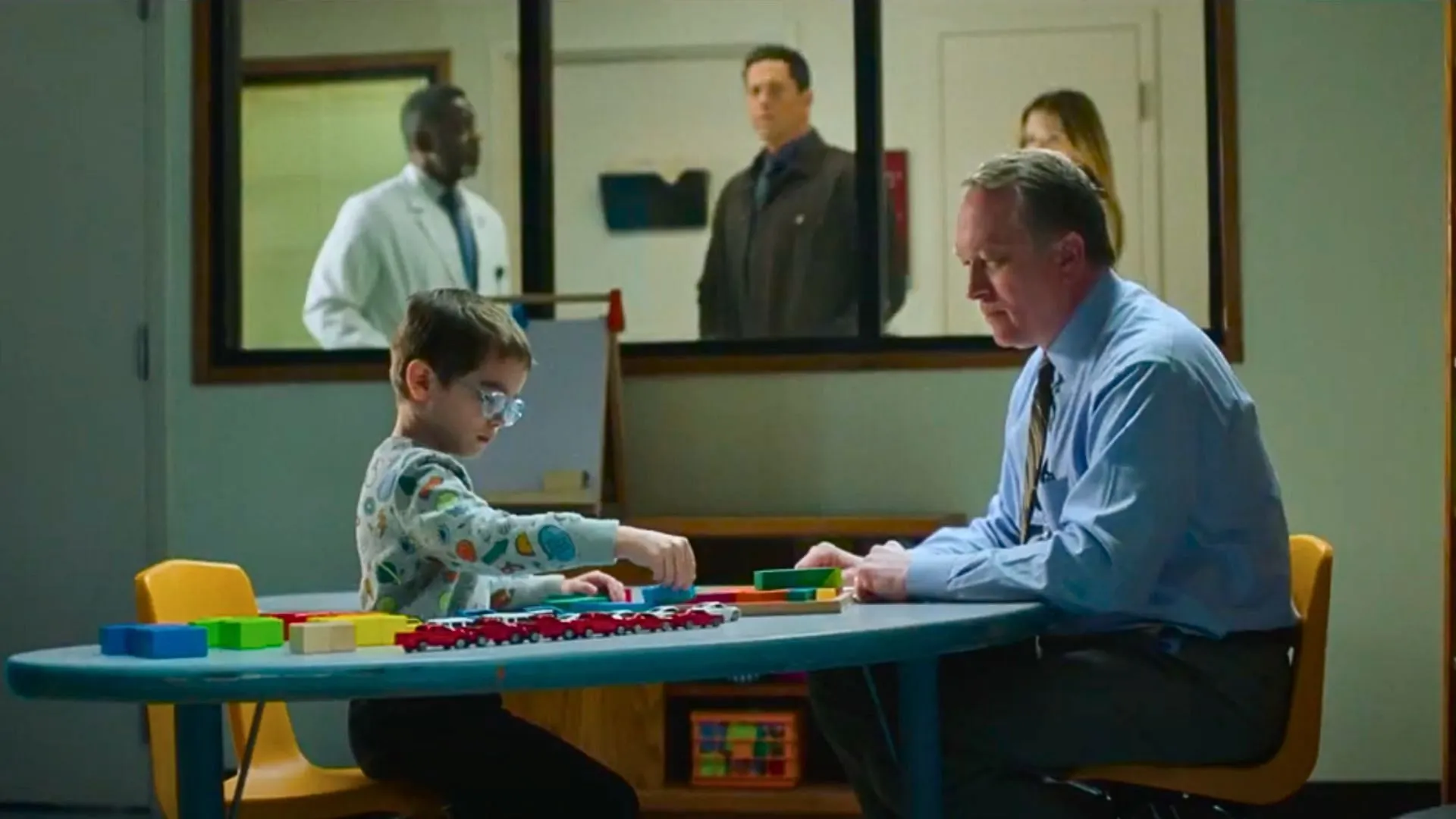The film opens with a foundation rooted in Scott LeRette’s memoir, an account drawn directly from his own life. This adaptation transforms a personal narrative into a cinematic experience marked by a sincere perspective and a quiet call to hope. Its basis in true events lends an honest, lived quality to the story, set against an undercurrent of spiritual reflection that seeks to provide a sense of uplift.
At its center is a family navigating significant hurdles. The film introduces us to Scott, a father whose own struggles surface alongside his role in a household that includes Teresa, the nurturing partner, and their two sons, Austin and Logan.
The narrative begins with a brief romantic interlude that unexpectedly leads to parenthood, setting in motion a series of challenges that test the family’s limits. Health complications, financial pressures, and the journey toward personal improvement create a portrait of a family determined to find meaning in everyday battles.
The backdrop is a small-town environment in Oklahoma, a setting that contributes a tangible atmosphere to the unfolding events. The timing of the film’s production and its planned release imbue the narrative with a particular sense of place, making the location an integral part of its storytelling fabric.
Story, Structure, and Narrative Devices
The film unfolds in a series of distinct segments that break free from a linear progression. Flashbacks reveal important moments from the past, allowing us to witness changes in the characters over time. A key choice is the focus on Austin’s voiceover, which offers a rare glimpse into his inner thoughts and emotions. This method gives viewers access to his personal reflections and adds a layer of intimacy to the narrative.
Visual elements play a significant role in the storytelling. The film integrates animation and computer-generated imagery to represent the world as seen through Austin’s eyes. Sequences such as a fantastical creature emerging on screen or imaginative flights of fancy bring the audience closer to his unique way of viewing everyday events.
An imaginary companion named Joe appears at critical moments, serving as a means to express internal conflict and escape from adult pressures. This creative device introduces an element of surprise and fresh energy that contrasts with the more grounded scenes.
The movie skillfully shifts between moments that lift the spirit and scenes that capture genuine hardship. There is a careful timing between lighter, humorous exchanges and segments filled with palpable emotional weight. These changes in mood are handled in a way that keeps the audience engaged without overwhelming them.
I recall watching films by Godard and Truffaut during my early years, and the approach here reminds me of that spirit—a willingness to experiment with cuts and pacing while still maintaining a clear sense of character. This method enriches the overall experience, as it allows both the technical elements and the heartfelt narrative to work together seamlessly, creating a viewing experience that is both engaging and thoughtfully crafted.
Character Development and Performances
Austin bursts onto the screen with a contagious liveliness. His quirky habits, such as his fondness for hats and surprising quotations, create a memorable character who carries his own spark. His challenges, including autism and brittle bone disease, affect every interaction, giving his actions a heightened sense of reality.
The use of his own narration adds a personal angle that invites viewers to experience his thoughts in real time. This voiceover approach provides an intimate look at how he processes his world, making his perspective a constant presence throughout the film.
Scott undergoes a marked change throughout the film, shifting from a carefree presence to one deeply aware of his responsibilities. His difficulties with alcohol come to the forefront in scenes that capture moments of clear vulnerability and missed opportunities.
The appearance of an imaginary friend serves as an interesting method for expressing Scott’s internal conflicts, highlighting the emotional toll of managing an intricate family situation. Several scenes capture his efforts to reconcile personal shortcomings with the need to care for his children, marking clear moments of both error and learning.
Teresa stands as a pillar within the family, offering steadiness amidst ongoing challenges. Her character is drawn with care, showing her own internal struggles as she balances the demands of motherhood with personal dreams. Though her screen time is limited, every appearance builds a picture of a person who carries the weight of familial needs while quietly nurturing hope for a better future.
Logan and other figures, including a compassionate priest, add depth to the film’s narrative. Each supporting role contributes meaningfully to the family’s dynamic, providing moments of relief and contrast that help complete the overall picture of a family in motion.
Themes and Emotional Resonance
The film examines the strength required to face personal and family struggles. It portrays physical challenges like brittle bone disease alongside the emotional strain experienced by characters managing autism and addiction. One scene, where Austin confronts everyday obstacles with spirited determination, stands out as a striking example of inner resolve. The portrayal captures moments of vulnerability that eventually give way to a hard-won fortitude.
Family ties form a vital core of the narrative, depicted with honesty and sensitivity. The bond between parents shapes their personal evolution, while the interactions between Austin and his brother Logan add a notable depth to the film’s fabric. Scenes featuring shared meals and quiet, reflective exchanges highlight both the support and the friction that naturally occur in a household facing constant challenges. These moments bring forward an authentic glimpse into the everyday realities of family life.
Spiritual elements and community support play a significant role, marking key instances where characters seek renewal. Moments set in a modest church and interactions within a support group underscore the film’s emphasis on personal recovery and reinvention.
Such sequences provide a balancing effect to the more unfiltered portrayals of hardship, emphasizing that a spark of renewal exists even during the toughest periods. Drawing on my own admiration for films by Baumbach and Gerwig, I appreciate how these choices anchor the story in a sense of honest emotion and grounded reflection.
Visual Style, Directorial Approach, and Technical Aspects
Jon Gunn adapts a memoir with a clear personal touch, turning private experiences into scenes that feel familiar and real. The film carries a look that recalls late-night family dramas on television, where each shot is chosen to reflect the characters’ inner struggles. Gunn allows the visuals to express emotion, using composition and lighting to reveal thoughts without relying on lengthy dialogue.
The camera work is marked by carefully arranged lighting and precise framing, with a muted color scheme that sets a reflective mood. Each scene is constructed with care, employing a measured pace that helps the viewer follow shifts in time and perspective. Transitions between segments are smooth, and repeated visual elements, such as the tally marking fragile bones, serve as quiet reminders of the story’s deeper layers.
Selective animated segments offer brief windows into Austin’s imaginative world. These sequences appear when his thoughts come to life, using computer-generated images that complement the live action. The effects remain subtle and are integrated in a way that supports the emotional narrative rather than distracting from it.
The technical approach in these moments ties back to an appreciation for a style that values both precision and creativity—a quality found in films that have always inspired my interest, from the work of Godard to the modern storytelling of directors like Greta Gerwig.
Script, Dialogue, and Pacing
The screenplay transforms a personal memoir into a visual narrative by assembling a series of episodic moments into a steady storyline. The film arranges distinct plot threads into a cohesive arc that enables the viewer to follow the unfolding events with clarity.
Each scene is placed with care, offering glimpses of character evolution while linking past memories with present challenges. This method retains the memoir’s genuine spirit and delivers a film experience that is both intimate and wide-ranging.
The dialogue strikes a balance between conversational ease and moments of heightened emotion. Exchanges among the characters range from naturally flowing interactions to passages that sometimes veer into overt emotional display.
Certain conversations stand out for their understated realism, revealing subtle aspects of character through their responses to everyday trials. Instances where humor surfaces during difficult moments contribute to an atmosphere that is both sincere and relatable, enhancing character development without falling into predictable patterns.
The film sustains a measured rhythm that accommodates both reflective sequences and brisk, tension-filled episodes. Slower segments give space for personal struggles to be observed and felt, while faster scenes capture the unpredictability of life’s daily challenges.
This mix of quiet introspection and rapid exchanges ensures that the narrative remains engaging. Each shift in tempo reinforces the emotional landscape of the film, allowing the viewer to experience peaks of feeling as well as moments of calm insight without losing track of the overall flow.
The Review
The Unbreakable Boy
The film delivers a touching portrait of family hardships and personal growth through strong performances and meticulous technical work. Its inventive structure and measured pacing capture life's unpredictable moments with refreshing sincerity. While its offbeat storytelling may polarize some, the emotional integrity and thoughtful approach make it a commendable effort in today's cinema.
PROS
- Strong performances by the cast
- Inventive narrative structure
- Effective visual storytelling
CONS
- Uneven pacing in parts
- Dialogue can feel contrived at times




















































